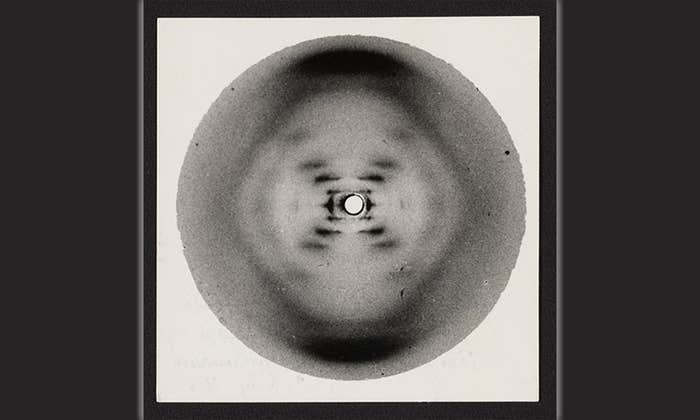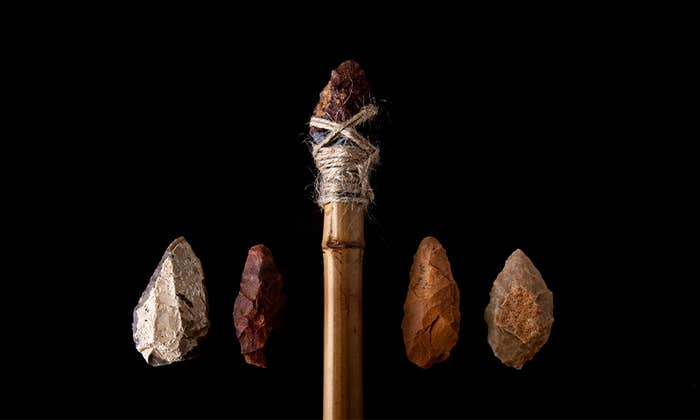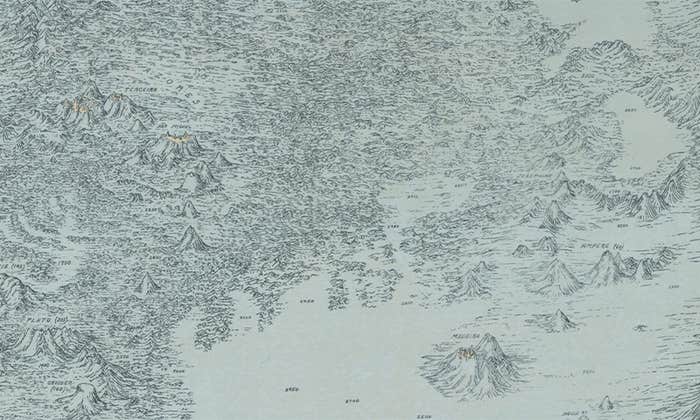In 1913, 26-year-old Russian biologist Nikolai Vavilov went to the John Innes Horticultural Institute to study at the feet of legendary geneticist William Bateson. While there, Vavilov attended lectures at nearby Cambridge University, and could often be seen bicycling around the city in his trademark suit and tie. He and Bateson became lifelong friends, and the Mendelian genetics that Bateson and his team championed—and that remains the core of the field of genetics to this day—was burned into Vavilov’s scientific soul.
The visit to England was cut short as a result of World War I and Vavilov returned home, where he began doctoral work on plant disease resistance, in part to alleviate the constant shortages of food in Russia. As he did, he began a one-man crusade to scour the planet collecting crop varieties that were disease resistant and might also shed light on the evolution of domesticated plants. For the next 25 years Vavilov’s travels and adventures, recounted in detail in his massive work Five Continents, would make Indiana Jones look like a Boy Scout. He collected hundreds of thousands of seed samples from 60 countries, beginning with Iran and the Pamir region in 1916, Afghanistan in 1924, Algiers, Morocco, Tunisia, Lebanon, Syria, Mesopotamia (Iraq), Palestine, Jordon, Ethiopia (Abyssinia), Greece, Cyprus, Crete, Italy and Spain in 1926. And he was only just getting started. Other collecting missions took him to China, Japan, Taiwan, and Korea, as well as Mexico, the United States, Canada, Germany, France, England, the Netherlands, Colombia, Peru, Bolivia, Chile, Argentina, Uruguay, Brazil, Trinidad, Puerto Rico, and Cuba.
Reputed to sleep only four hours a night, Vavilov used the extra time to master more than a dozen languages, so he could converse with local farmers to learn what they knew about the plants he was studying, and to write more than 350 papers and books.
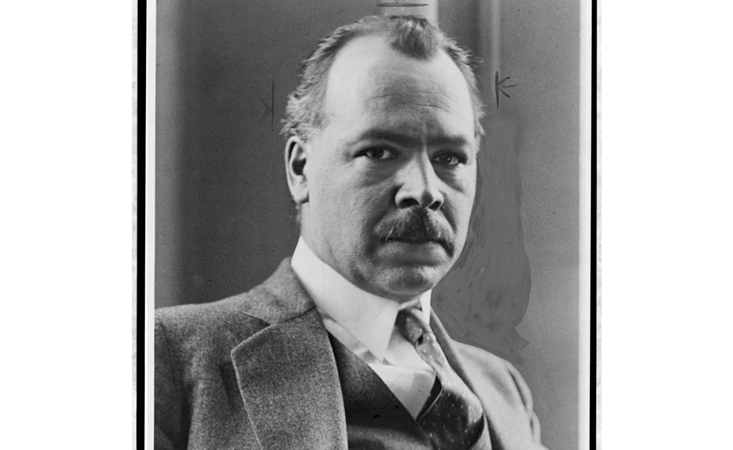
On his first trip in 1916, he was arrested at the Iran-Russia border and accused of being a spy, because he had a few German textbooks with him. In the Pamir mountain region of central Asia, Vavilov traversed death-defying mountain passages, an experience, he wrote, “which afterwards this traveler remembers best. Such moments steel one for the rest of one’s life: they prepare a scientist for all difficulties, all adversities and everything unexpected.” He’d need that steel—over and over. On his trip to Afghanistan, he fell as he was stepping between two train cars, and was left dangling by his elbows as the train roared along. On his trip to Syria he contracted malaria and typhus, but carried on.
As he collected and studied domesticated plants and their ancestors all over the planet, Vavilov began to develop radical new ideas about domestication per se and evolution writ large. At a June 1920 meeting of the All-Russian Congress on Breeding and Seed Production, he introduced his “law of homologous variation.” The idea was to take the idea of homology—similarity due to shared evolutionary history—and build a predictive model of plant variation. Because evolutionarily-related plant species have similar sets of genes, Vavilov argued that if he knew the traits present in one species—for example, flower color, number of inflorescences, seed shape, stalk length, pollination time, and so on—he could predict the parallel traits in closely related species. And the law could be applied at the genus or family level as well. When Vavilov introduced the idea at the meeting, people rose up and cheered, “biology has found its Mendeleev,” for creating a sort of periodic table of plant variation. In time, Vavilov found evidence for his law in wheat, rye, millet, oats, cotton, grasses, potatoes, and other domesticated plants. Rumors spread that Nevsky Avenue in Petrograd (soon to be renamed Leningrad, and eventually St. Petersburg) was going to be renamed the Avenue of Homologous Lines.
Vavilov dreamed of amassing a world seed bank that would act as a repository of crops that could be used to feed the planet.
Vavilov’s travels provided him with a unique global perspective, which led him to identify “centers of plant domestication.” He introduced the centers idea in 1924, and over the subsequent decades tweaked the number—between five and eight—based on new data, most often including southwestern Asia, southeastern Asia, coastal areas of the Mediterranean, Abyssinia, the Mexican-Peruvian region, the Chiloe archipelago (near Chile), the border between Brazil and Paraguay, and one island center, near Indonesia. Above and beyond the scientific importance of his ideas on homologous variations and centers of origin, Vavilov believed they had practical merit and might “serve as the foundation for all breeding and genetic work of the next and later Five-Year Plans.”
Recognition and then honors soon followed. In his home country, Vavilov was one of the first scientists to receive the Lenin Prize, was elected a member of the Academy of Sciences of the USSR, and was eventually made a foreign member of the Linnaean Society, the American Association for the Advancement of Science, and many other academies around the world.
Much more important to Vavilov than the accolades was his small empire of institutes and field stations devoted to the study of the biogeography, genetics, and evolution of domesticated crops. This empire was part of the labyrinth that was Soviet bureaucracy, but was born in 1920-21 when Vavilov took the helm at the Department of Applied Botany in Petrograd and culminated in his leading the All-Union Institute of Plant Industry (known by the Russian acronym VIR), and the Lenin All Union Academy of Agricultural Sciences (VASKhNIL). Each of these organizations employed scores of scientists, technicians, and workers and had associated branch field stations: When Vavilov was president of VASKhNIL, it alone was comprised of 111 research institutes, 206 specialized “zonal stations,” 26 agricultural research stations, and 36 breeding stations.
As early as 1921 Vavilov had dreams of amassing a world seed bank that would serve science and act as a repository of crops that could be used to feed the planet. As he traveled and collected he constantly sent back seed samples, hundreds of thousands of them in total, to the institutes and field stations under his bailiwick.
By the mid-1930s the problem for Vavilov, and so many other Russian biologists, was that it had become a very dangerous time to be a Mendelian geneticist in the Soviet Union.
The trouble started when, in the mid-1920s, the Communist Party elevated a number of uneducated men from the proletariat into positions of authority in the scientific community, to glorify the “average man.” Trofim Lysenko fit the bill. He had been raised by poor farmers in the Ukraine, hadn’t learned to read until he was 13, and had no university degree, having only studied at the Vocational School for Gardeners in Uman, Ukraine in 1917. The only training he had in crop breeding was a brief course in cultivating sugar beets at the Kiev Agricultural Institute.
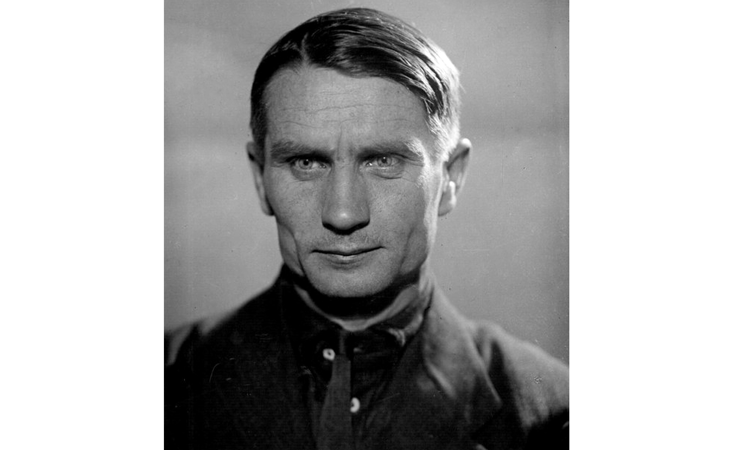
Lysenko had a mid-level job sowing peas at the Gandzha Plant Breeding Laboratory in Azerbaijan when he convinced a Pravda reporter, who was writing a puff piece about the wonders of peasant scientists, that the yield from his pea crop was far above average, and that his technique could help feed his starving country. The Oct. 8, 1929 Pravda article claimed “the barefoot professor Lysenko has followers . . . and the luminaries of agronomy visit . . . and gratefully shake his hand.” The article was fiction, but brought Lysenko to national attention, including the attention of Josef Stalin.
Lysenko soon claimed to have conducted experiments in which wheat and barley produced higher yields during stretches of cold weather after their seeds were frozen in water before planting. Using this method of “vernalization,” he said he could double crop yield in the Soviet Union in just a few years, in part by transforming spring grain crops into winter grain crops. Next he claimed that not only would plants that went through the process of vernalization produce higher yields, but that their offspring would also produce higher yields. Much evidence from laboratories around the world had already shown that this form of inheritance—called the inheritance of acquired characteristics or Lamarckian inheritance—simply did not work, and there were no controlled studies showing it in operation. But Lysenko argued that the inheritance of acquired characteristics was more philosophically akin to Marxist philosophy than was the Mendelian genetics championed by Europeans and Americans, as well as the vast majority of Soviet geneticists. Stalin, who was promoting the idea that if the economy was transformed, everything would change for all and the generations to come, was enamored with Lysenko’s idea that manipulating the conditions of the environment changed not only the genetics of the organisms in that environment, but their descendants as well.
Lysenko never undertook any controlled experiments on increased crop yield or the inheritance of acquired characteristics. Virtually all of the data he claimed to have collected was either slipshod, or, more often yet, downright fabricated. But with Stalin as his ally, Lysenko launched a crusade to discredit work in what he called “Western genetics,” by which he meant Mendelian genetics. At an agricultural conference held at the Kremlin in 1935, when Lysenko finished a fire-spitting speech in which he called Western geneticists “saboteurs,” Stalin rose to his feet and yelled, “Bravo, Comrade Lysenko, bravo.”
Vavilov had actually befriended a young Lysenko in the 1920s, when Lysenko was receiving national acclaim for his ideas about increasing crop yields, a topic that was always near and dear to Vavilov. Initially hoodwinked by Lysenko, over time, as he looked into Lysenko’s claims, Vavilov became suspicious, and he asked a student of his to see if Lysenko’s results could be replicated. They could not, and Vavilov became Lysenko’s outspoken opponent. In retaliation, in late 1933 Stalin’s Central Committee forbade Vavilov from any more travels abroad and Lysenko warned Vavilov and his student that “when (their) erroneous data were swept away . . . those who failed to understand the implications” would also be “swept away.”
This was no idle threat. Lysenko’s powerbase was well known: “The whole country knows of the debate taking place between Vavilov and Lysenko,” one his cronies stood up and announced at a meeting. “Vavilov will have to change his ways, because Stalin said that things must not work the way Vavilov says but as Lysenko says.” Within a few years, working with Stalin and others, Lysenko was well on the way to purging Mendelian geneticists from the ranks of Soviet science, having them fired or thrown into prison if they did not swear allegiance to Lysenko’s views. He had also, for all intents and purposes, removed all mention of Mendelian genetics from biology textbooks at every level from grade school on through university.
A bag of seeds could make the difference between life and death for a Leningrader.
Vavilov was undeterred and kept up his fight against Lysenko. He was not a polemicist by nature, and in public his responses were usually centered on the data he and others had collected on Mendelian genetics and the lack of evidence from Lysenko, but in 1939 at a meeting of the All-Union Institute of Plant Breeding, he gave a talk in which he declared, “We shall go into the pyre, we shall burn, but we shall not retreat from our convictions.” Shortly after that, when he was in Moscow, Vavilov and Lysenko got into a heated argument. One of those present told a friend, “now he is going to be arrested…because he said such a terrible thing to Lysenko. He said ‘thanks to you our country has been overtaken by other countries.’”
Lysenko, who by this time had usurped the presidency at VASKhNIL, and was Stalin’s right-hand man in science, had enough of this thorn in his side. On Aug. 6, 1940, while traveling in the Ukraine, Vavilov was picked up by four men wearing dark suits, taken to Moscow by the NKVD (the predecessor to the KGB), and put in the dreaded Lubyanka prison, where, for the next 11 months, he was interrogated, primarily by lieutenant Alexander Khvat, on 400 separate occasions, for a total of 1,700 hours.
Khvat, of course, had no trouble gathering phony evidence that Vavilov had “damaged the landing grounds in the Leningrad Military Region by sowing the airports with seeds containing weeds.” The results from an “expert commission” that Khvat had assembled, told him of the “high concentration of socially hostile elements” at Vavilov’s institutes, and of “twenty-one employees of noblesse origin, eight from the priesthood, twelve honorary citizens [code for tsarists], and ten from the merchant class.”
Eleven months later, at Vavilov’s “trial,” conducted by a panel of three generals (not judges), he was formally accused of acting as one of “the leaders of an anti-Soviet organization … (being) an active participant in an anti-Soviet organization of right-wingers operating within the Commissariat for Agriculture and several scientific institutions in the USSR. . . . (and) in the interests of these anti-Soviet organizations carrying on widespread wrecking activity aimed at disrupting and destroying the collective farm system and the collapse and decline of socialist agriculture in the USSR.”
The verdict was a foregone conclusion, and Vavilov’s subsequent appeal was denied. The original death sentence was eventually commuted to 20 years in prison. On Oct. 16, 1941 he was packed on a train, with hundreds of others, and sent to Saratov Prison Number 1. When Vavilov’s sentence began, the VIR institute at 44 Herzen Street in Leningrad, the largest of his research institutes—and one that Lysenko had yet to get his hands on—housed about a quarter of a million different seed samples from around the world, including some 35,000 wheat, 10,000 corn, 26,000 legume, and 1,200 fruit samples, collected largely, though not entirely, by Vavilov himself.
On June 22, 1941, almost four months before Vavilov began rotting in Saratov Prison Number 1 for being a Mendelian geneticist, Hitler invaded the Soviet Union. On Sept. 8, 1941, the siege of Leningrad began: By the time it ended almost two and half years later, at least 800,000 Leningraders (and perhaps significantly more, scholars debate the exact figure) were dead, the vast majority as the result of starvation and malnutrition.
During the winter of 1941-42, the worst period of the Nazi siege, Vavilov’s team at the VIR in Leningrad knew that their leader had been abducted, but beyond that, little information was available. For the moment what mattered most to them was that the single largest part of Vavilov’s collection was under their guardianship in the heart of Leningrad. Many of the men at the VIR had been sent to the front to fight, and others like E.V. Wolf, a botanist and expert in plants that produce volatile oils, and E. Gleiber, the archivist at the VIR, of whom Vavilov had once said “for the sake of the cause he will give away the shirt off his back,” were killed in the almost daily bomb raids. But a small team of women and men remained at the VIR with the seeds. They knew everything about what they studied and guarded. They also knew that the collection was in grave danger. The Nazi SS Sammelkommandos (collecting commandos) not only wanted the seeds at the field stations that Vavilov had set up all over the Soviet Union, they wanted the seeds at the VIR, in their pursuit of food to provide for the new Lebensraum (living space) they thought the war would bring. The VIR seeds were of particular importance as a treasure trove of genetic varieties of crop plants that the Sammelkommandos craved so desperately.

The Nazis were just one problem that the seeds and their scientist guardians faced. Lysenko and Stalin continued to imprison people for promoting Mendelian genetics, a cornerstone principle at VIR, and that meant the researchers there were potential targets. But that was not an immediate threat to the& VIR team, which, during the siege of Leningrad, meant it was not a threat at all.
Exceptional cold, with temperatures plummeting to -35 degrees Celsius, was an immediate threat to the collections, and escape from it seemed almost impossible, with frost penetrating even the deepest basements. Firewood was almost as scarce as food, but somehow, burning whatever would burn, they kept the stoves lit and the seeds, for the most part, survived.
The most heartrending threat to the seeds was the citizens of Leningrad themselves. In the winter of 1941-42, the daily food ration was down to a morose 250 grams. People were eating pet food and pets. They were ripping down wallpaper and scraping off the glue, which, when mixed with water, had the texture of a watery porridge. They boiled anything that could be eaten. For many that was not enough, as the makeshift diary of 12-year-old Leningrad resident Tanya Savicheva made painfully clear: “28 December 1941 – Zhenya died. 25 January 1942 – Granny died. 17 March – Lyoka died. 13 April – Uncle Vasya died. 10 May – Uncle Lyosha died. 13 May at 7:30am – Mama died. The Savichevas are dead, everyone is dead. Only Tanya is left.” Little Tanya’s diary was not discovered until long after the war, but a frozen corpse in a Kafkaesque pose on the streets of Leningrad during the siege, cigarette dangling from its lips, and a bloodless finger pointing to the location of one of the recent mass graves that dotted the city landscape, told the same story.
Vavilov could only have dreamed of the technology required to build and maintain a seed vault inside a mountain that sits in permafrost.
That’s what it had come to. A bag of seeds could make the difference between life and death for a Leningrader. The VIR scientists understood that all too well, but they had to do what they had to do to guard the treasure for this and future generations. Some samples, for which there were replicates, were sent to other institutes and field stations: For everything else they triple-locked every entrance, sealed up the windows with iron bars, and kept three or more people on duty at the VIR 24 hours a day. It worked—losses to the citizens of Leningrad were incidental, in part because of security, and in part because there were very few attempts to appropriate the seeds.
If Stalin, Lysenko, the Nazis, and the people of Leningrad were not enough of a threat, there were the rats. Mad with hunger and armed with razor-sharp teeth and bodies that contorted like shape shifters capable of entering the smallest of spaces, the rats that hadn’t starved to death themselves were everywhere. But the VIR staff was smarter still and devised a way to hang the canisters with the seed treasure between the shelving units. That slowed the rats down. They also divided up each type of seed into replicate packets so that if some of the treasure was lost in rat guts, some of it would still survive.
Like virtually everyone in Leningrad, the 16 scientists remaining at the VIR were slowly starving to death during the siege, the difference being that in arms reach they had an abundance of rice and other forage that could save them. But, they understood that these samples, the genetic diversity they captured, and all that they had taught science, were priceless. What’s more, the seeds had come to stand for Vavilov himself and his Herculean efforts. And so they never ate any of them.
Over that winter Alexander Stchukin, an expert on groundnuts, starved to death at his desk at the VIR, as did Dmitry Ivanov, a specialist on rice, Georgi Kriyer, an expert on medicinal herbs and Liliya Rodina, whose expertise lay in grain crops. Others on the VIR team—including A. Korzun, G. Kovalevsky, N. Leontjevsky, A. Malygina, and M. Steheglov—succumbed to starvation as well that winter. Fortunately, some of those who survived, like Vavilov’s friend, Vladmir Lekhnovich, an expert on potatoes, lived to document it all for future generations.
Vavilov would have been proud had he known (he didn’t) what his colleagues had sacrificed to guard the treasure. The following winter, on Jan. 24, 1943, as the siege went on, Vavilov complained of chest pains, shortness of breath, and diarrhea, and was admitted to the hospital at Saratov Prison Number 1. He looked like a ghost. The doctors recorded “maceration, pale skin, and swelling in the feet,” and diagnosed him with “dystrophy from prolonged malnutrition.” Two days later he was dead. The man who had collected more plant samples than any person in history, had cheated death repeatedly, and had worked to solve the puzzle of famine in his homeland, had been slowly and methodically starved to death.
It would be another decade before the Soviet government would admit that Vavilov’s trial had been a sham, and then only in the coarsest, most bureaucratic manner possible, noting “gross breaches” of the law had been committed, and that the investigation had been “tendentious and unobjective.” But in time the rehabilitation was complete. The VIR in what is now St. Petersburg was eventually renamed the N.I. Vavilov All-Russian Scientific Research Institute of Plant Industry, and remains not only a major seed repository, but a leading research center on plant domestication.
Vavilov, and those who starved at the VIR, could only have dreamed of the technology required to build and maintain a seed vault inside a mountain that sits in the permafrost of Spitsbergen, a remote Norwegian island 1,300 kilometers north of the Arctic circle. But the Svalbard Global Seed Vault is the futuristic version of what Vavilov had begun in 1921. Dubbed the Doomsday Vault, with a proclaimed mission to serve as “a global seed vault to serve as a backup storage facility … to store duplicates (backups) of seed samples from the world’s crop collections,” it opened in 2008, as a repository that would ultimately contain all the world’s crop plant genetic diversity. That vault is capable of storing 4.5 million different varieties of plants within its temperature controlled, -18 degrees Celsius facilities: With an average of 500 seeds per sample, that’s 2.5 billion seeds. Precisely the sort of place that Vavilov had dreamed of.
As of today, 1,074,537 samples from around the globe sit in the Svalbard Global Seed Vault. Among those samples are 60 boxes from depositor 1739365, the N.I. Vavilov All-Russian Scientific Research Institute of Plant Industry. In those boxes lay samples from 148 species and 41 genera of domesticated plants collected from 109 countries. Many are the descendants of the seeds Vavilov himself collected.
Lee Alan Dugatkin is a historian of science and an evolutionary biologist at the University of Louisville. He is the author of Behind the Crimson Curtain: The Rise and Fall of Peale’s Museum, and many other books, including How to Tame a Fox and Build a Dog, which The New York Times called “a story that is part science, part Russian fairy tale, and part spy thriller.”
Lead image: Olga Popova / Shutterstock



















